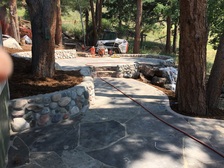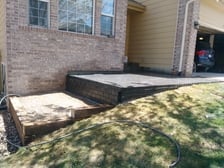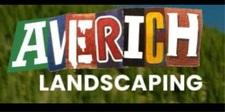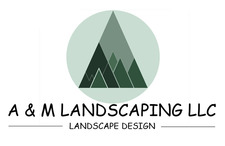
Get matched with top mulch and topsoil pros in Arvada, CO
There are 7 highly-rated local mulch and topsoil pros.
Matching on Angi


TRUSTED BY HOMEOWNERS
 4.8
4.8  24
24 Verified Reviews for Mulch And Topsoil Service pros in Arvada, CO
*The Angi rating for Mulch And Topsoil Service companies in Arvada, CO is a rating based on verified reviews from our community of homeowners who have used these pros to meet their Mulch And Topsoil Service needs.
*The HomeAdvisor rating for Mulch And Topsoil Service companies in Arvada, CO is a rating based on verified reviews from our community of homeowners who have used these pros to meet their Mulch And Topsoil Service needs.
Last update on April 25, 2025
Mulch and topsoil pros in Arvada
We are owner operated, and believe in building long-term relationships with our clients by delivering honesty along with exceptional work. We pride our company on reliability, great communication, integrity, and customer service. We are experts in our trade and will do our best to keep you as educated as we can on your particular project. We work for our customers on their schedule, as to make it as convenient as possible for you! We look forward to working with you!
"Working with Kavod really made our construction process simple. The communication during and after business hours is fantastic. Their use of company cam kept us up to date on what was going on throughout each work day. Kavod worked extremely efficiently, and their attention to detail was excellent. I cannot say enough good things. If you are looking to start your next construction project i would recommend Kavod 10X over again."
Fabian S on August 2024
We are owner operated, and believe in building long-term relationships with our clients by delivering honesty along with exceptional work. We pride our company on reliability, great communication, integrity, and customer service. We are experts in our trade and will do our best to keep you as educated as we can on your particular project. We work for our customers on their schedule, as to make it as convenient as possible for you! We look forward to working with you!
"Working with Kavod really made our construction process simple. The communication during and after business hours is fantastic. Their use of company cam kept us up to date on what was going on throughout each work day. Kavod worked extremely efficiently, and their attention to detail was excellent. I cannot say enough good things. If you are looking to start your next construction project i would recommend Kavod 10X over again."
Fabian S on August 2024

We pride our company on reliability, great communication, integrity, and quality work. We are experts in our trade and will do our best to keep you as educated as we can on your particular task or project. We look forward to earning your business!
"Jerry exceeded expectations. I had read previous reviews from past clients and they all turned out to be spot on! Jerry is meticulous in his work, timely, communicative, and professional. Jerry clearly has a strong work ethic, is very easy to converse with, and operates with integrity. I'm delighted with the final product and would hire Swiftcreek landscaping again in a heartbeat. Jerry and his loyal crew were a breath of fresh air and a pleasure to work with throughout."
Clare F on May 2021
We pride our company on reliability, great communication, integrity, and quality work. We are experts in our trade and will do our best to keep you as educated as we can on your particular task or project. We look forward to earning your business!
"Jerry exceeded expectations. I had read previous reviews from past clients and they all turned out to be spot on! Jerry is meticulous in his work, timely, communicative, and professional. Jerry clearly has a strong work ethic, is very easy to converse with, and operates with integrity. I'm delighted with the final product and would hire Swiftcreek landscaping again in a heartbeat. Jerry and his loyal crew were a breath of fresh air and a pleasure to work with throughout."
Clare F on May 2021

Carrazco's Cleaning and Landscaping proudly serves its customers with pride, integrity and attention to the details that matter most to you. This is one of the many things that sets us apart from the rest. We are locally owned and operated. Give us a call today!
"."
john . on May 2020
Carrazco's Cleaning and Landscaping proudly serves its customers with pride, integrity and attention to the details that matter most to you. This is one of the many things that sets us apart from the rest. We are locally owned and operated. Give us a call today!
"."
john . on May 2020
County Wide Services is committed to excellence in every aspect of our business. We uphold a standard of integrity bound by fairness, honesty, and personal responsibility. Our distinction is the quality of service we bring to our customers. Accurate knowledge of our trade combined with ability is what makes us true professionals. Above all, we are watchful of our customers' interests, and make their concerns the basis of our business.
"They did an excellent job and I would recommend them. I have gotten more compliments on my water feature than on anything else and I have a large yard."
Cory N on July 2008
County Wide Services is committed to excellence in every aspect of our business. We uphold a standard of integrity bound by fairness, honesty, and personal responsibility. Our distinction is the quality of service we bring to our customers. Accurate knowledge of our trade combined with ability is what makes us true professionals. Above all, we are watchful of our customers' interests, and make their concerns the basis of our business.
"They did an excellent job and I would recommend them. I have gotten more compliments on my water feature than on anything else and I have a large yard."
Cory N on July 2008

We are a locally owned and operated company that values honesty and integrity and treats your home as if it were our own. Our services are customized to the individual project, paying close attention to the details of each project that we're involved with. We pride ourselves on the quality of our work as well as our commitment to outstanding results. We look forward to building lasting relationships and guaranteeing your satisfaction!
"So professional and hard working. A family business dedicated to providing high quality and affordable yard service from checking sprinkler system and doing yard cleanup and landscape repair to landscape design . We were in a pinch as needed help before putting a rental on the market and felt so fortunate to have been able to work with the owners of this company. "
Lynn B on April 2025
We are a locally owned and operated company that values honesty and integrity and treats your home as if it were our own. Our services are customized to the individual project, paying close attention to the details of each project that we're involved with. We pride ourselves on the quality of our work as well as our commitment to outstanding results. We look forward to building lasting relationships and guaranteeing your satisfaction!
"So professional and hard working. A family business dedicated to providing high quality and affordable yard service from checking sprinkler system and doing yard cleanup and landscape repair to landscape design . We were in a pinch as needed help before putting a rental on the market and felt so fortunate to have been able to work with the owners of this company. "
Lynn B on April 2025

We pride our company on reliability, great communication, integrity, and quality work. We are experts in our trade and will do our best to keep you as educated as we can on your particular task or project. We look forward to earning your business!
"Ben Muck of A & M Landscaping turned our backyard into a sanctuary. It is now my favorite place to be, in or outside of my house! Whether for socializing, or recharging alone, Ben created spaces that are comfortable, functional, and beautiful. He was easy to work with, pleasant, informative, and professional, and delivered above and beyond all we had hoped for. Our backyard renovation was especially important to my husband and me, because this is our first house, and it was inheritance money from my grandparents that provided for the project. I told Ben that it was at their house as a child that I learned the joy of â visitingâ with loved ones outside. Ben designed a space Grandma and Grandpa would have loved, and I am so very grateful."
RuthAnn L on October 2024
We pride our company on reliability, great communication, integrity, and quality work. We are experts in our trade and will do our best to keep you as educated as we can on your particular task or project. We look forward to earning your business!
"Ben Muck of A & M Landscaping turned our backyard into a sanctuary. It is now my favorite place to be, in or outside of my house! Whether for socializing, or recharging alone, Ben created spaces that are comfortable, functional, and beautiful. He was easy to work with, pleasant, informative, and professional, and delivered above and beyond all we had hoped for. Our backyard renovation was especially important to my husband and me, because this is our first house, and it was inheritance money from my grandparents that provided for the project. I told Ben that it was at their house as a child that I learned the joy of â visitingâ with loved ones outside. Ben designed a space Grandma and Grandpa would have loved, and I am so very grateful."
RuthAnn L on October 2024
New Business but well experienced workforce and even better customer service & quality work. We guarantee to provide you with best prices and efficient timing on all contracted deliverables.
New Business but well experienced workforce and even better customer service & quality work. We guarantee to provide you with best prices and efficient timing on all contracted deliverables.
High Country Outdoor Solutions specializes in providing professional landscape and maintenance services that are sure to elevate your property's aesthetic. Our services include landscape design and installation, landscape maintenance, hardscape installation, sod installation, grading and drainage improvements, and snow removal. By entrusting your landscaping needs with our team of professionals, you can be confident that your outdoor space is in hands that truly care and value your time and investment. Rooted in customer service and delivering a tailored approach to each property, our success lies within the customer's satisfaction. Proudly serving and transforming outdoor spaces across the Greater Denver area.
"Working with parker was like working with a childhood friend. Shared the vision for the install and got it done without any hiccups and absolutely created the perfect version of what I wanted for my property."
Will K on October 2024
High Country Outdoor Solutions specializes in providing professional landscape and maintenance services that are sure to elevate your property's aesthetic. Our services include landscape design and installation, landscape maintenance, hardscape installation, sod installation, grading and drainage improvements, and snow removal. By entrusting your landscaping needs with our team of professionals, you can be confident that your outdoor space is in hands that truly care and value your time and investment. Rooted in customer service and delivering a tailored approach to each property, our success lies within the customer's satisfaction. Proudly serving and transforming outdoor spaces across the Greater Denver area.
"Working with parker was like working with a childhood friend. Shared the vision for the install and got it done without any hiccups and absolutely created the perfect version of what I wanted for my property."
Will K on October 2024
Knowledgeable Moving & Junk Removal LLC is committed to excellence in every aspect of our business. We uphold a standard of integrity bound by fairness, honesty, and personal responsibility. Our distinction is the quality of service we bring to our customers. Accurate knowledge of our trade combined with ability is what makes us true professionals. Above all, we are watchful of our customers' interests, and make their concerns the basis of our business.
"Excellent! Very prompt, courteous and reliable."
Joanna S on October 2024
Knowledgeable Moving & Junk Removal LLC is committed to excellence in every aspect of our business. We uphold a standard of integrity bound by fairness, honesty, and personal responsibility. Our distinction is the quality of service we bring to our customers. Accurate knowledge of our trade combined with ability is what makes us true professionals. Above all, we are watchful of our customers' interests, and make their concerns the basis of our business.
"Excellent! Very prompt, courteous and reliable."
Joanna S on October 2024
Cornerstone Lawn Care is a personal lawncare service company wanting to serve family home's lawncare needs. Services completed consist of; mowing, edging, trimming, aeration, spring/fall leaf cleanup, bush/tree trimming, overseeding, fertilization, weed control, snow removal, fence pressure washing/staining, and small landscaping projects.
Cornerstone Lawn Care is a personal lawncare service company wanting to serve family home's lawncare needs. Services completed consist of; mowing, edging, trimming, aeration, spring/fall leaf cleanup, bush/tree trimming, overseeding, fertilization, weed control, snow removal, fence pressure washing/staining, and small landscaping projects.
Mulch and topsoil services FAQs
Mulch costs anywhere from $30 to $150 per cubic yard, depending on the type you choose. On the inexpensive end, red and black mulch are about $35 to $40 per cubic yard, and are typically made from recycled waste wood like shredded old pallets or deck material. Cedar, cypress, and rubber mulch cost anywhere from $100 to $120 per cubic yard. A pro can help you determine the type of mulch most suitable for your landscaping needs.
Topsoil costs from $12 to $55 per cubic yard, depending on the type you choose. For example, screened black dirt will cost about $15 per cubic yard. Loam (soil composed of sand, silt, and clay) costs about $17 per cubic yard. Standard screened topsoil costs about $20 per cubic yard. The type of topsoil you need depends on your landscaping plans.
Topsoil should go down first. If the topsoil is next to your house, make sure the grade slopes away from the house to keep water from pooling against your foundation and possibly leaking into your basement or crawl space. Don’t cover your decorative landscape mulch with topsoil as that defeats the purpose of laying down the mulch. If you’re trying to create a certain soil composition to improve plant growth, you’ll likely want compost mixed into the topsoil instead of mulch. Over time, any decorative wood mulch will simply decompose under the topsoil.
No, mulch itself does not necessarily attract termites even though it’s usually made of shredded wood. Some types of mulch like cedar or cypress resist termites because they’re toxic or unappetizing to the wood munchers. However, when the mulch is deep enough, say three inches or more, it creates a perfect habitat for insects of all kinds to build nests.
Although it’s not required to lay anything under mulch, it can help to put landscape fabric or plastic weed barrier down and lay mulch on top. The barrier helps keep weeds from growing up through your mulch. It also helps keep rodents and insects from burrowing into the ground underneath.




















